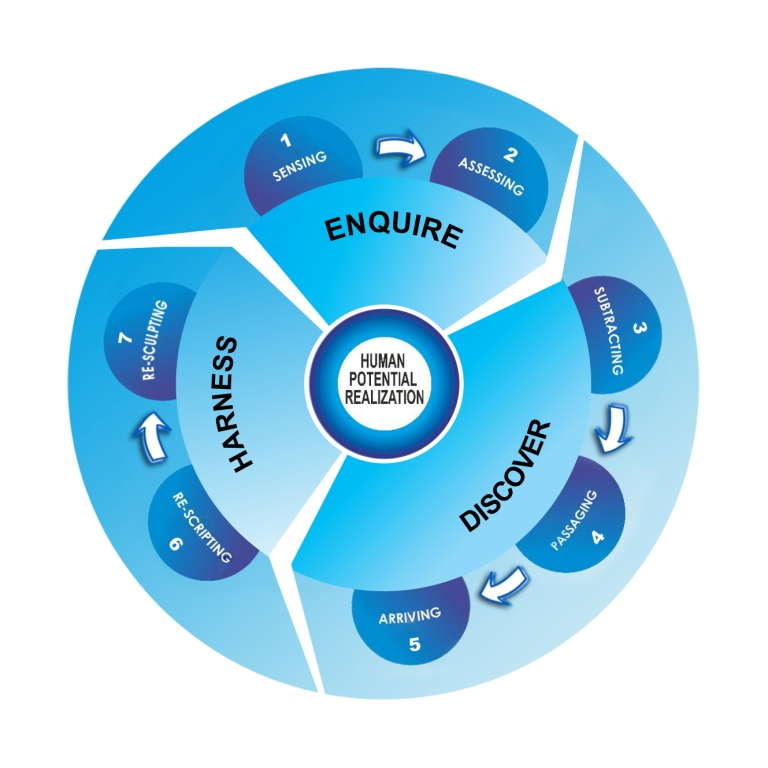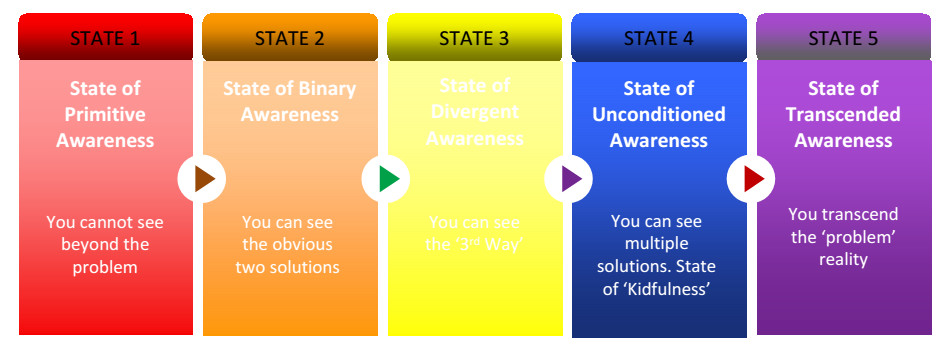The purpose of this article is to,
- Shed light on why employee engagement is at an all-time low despite record amounts of money being spent on OD (Organization Development)
- Offer a concrete alternative to the status quo (unleashing greater levels of Human Potential realization), and
- Open up a conversation on how to further engage organizations on these new approaches
* * *
“Conventional change initiatives spend most of the money, attention and effort focused on…the structures and systems that are needed in the organisation. Often this is expressed by Executive teams rushing first to a ‘restructure’ of the organisation chart…It also accounts for the immense popularity of Lean/6 Sigma business process reviews; again, people imagine that if only they could get the system right, then productivity would increase. The unfortunate truth is that most of these BPR efforts do not return the promised benefits to the organisation.”
Brent Sheridan, OD Specialist
ALL IS NOT WELL
Gallup’s 2011-2012 “State of Global Workplace” survey exposed that a dismal 13% of employees surveyed across 142 countries were engaged at work! 63% of the workforce is not engaged (they are uninspired, lacked motivation and would do just enough to fulfill their job requirements), and a further 24% are actively disengaged.
Our own research has shown that on average only 50-60% of an individual’s talents and gifts (potential) are being utilized in their professions (see figure 1).

To compound matters, the challenges organizations face today are much more complex in nature than 30 years ago. For example, a single-minded focus on profitability and shareholder value is no longer sufficient. Organizations are expected to address the needs of multiple stakeholders (customer, employees, society, planet, etc.) and create true win-win-win solutions.
SO HOW ARE ORGANIZATIONS COPING WITH ALL THIS?
Organizations today are aware of the crucial need to fully realize its human potential as a means to survive in a complex landscape and produce results. Management acknowledges that a greater focus on its human capital is also critical in bringing meaning and purpose to individuals and driving employee engagement. However the actions, behaviours and investments needed to unlock the Human Potential are not yet being adopted.
Since the turn of the 20th century, “emphasis in most management methods continues to be on analysis; divide complicated tasks into manageable bites…and then glue them back together to produce the best performing system”[1] (see bottom-right quadrant in figure 2). One study has shown that the 2013 spending on corporate training exceeded US$ 130 Billion worldwide[2], almost all of which is spent on job skills, professional training or procedural or compliance trainings[3] (the Systems quadrant).

Although such a systems-based approach has been very effective at resolving the challenges of yesterday’s world and raising productivity and performance, it is simply not sufficient to deal with more complex and ambiguous environments of today.
This excessive focus on systems has created a disconnect between the individual needs and aspirations (a clear desire for greater engagement & meaning at work) and the collective awareness / habits of the organization.
WHY IS THIS AND WHAT ARE ORGANIZATIONS DOING ABOUT IT?
Certainly there are a number of factors contributing to this disconnect. Anecdotally we know there is an implicit fear among organizational leaders and HR professionals that a focus on raising individual awareness (top left quadrant) will either lead to attrition (the employee realizing that their potential is not being utilized in the current work environment and therefore deciding to leave) or they ‘rocking the boat’ (when the ‘awakened’ individual starts challenging or disrupting the current culture and way-of-working).
More importantly perhaps, we have evidence that the mindset quadrant attracts the least attention because it is also one of the most ‘troublesome’, difficult and ‘invisible’ developmental areas for organizational leaders to deal with. Currently there are no practical and implementation-ready tools available to tackle the ‘Mindset and Inner Being’ quadrant in a robust, measurable and scalable way. Hence many organizations shy away from it and instead focus on the other three quadrants. At least until now…

GOOD NEWS! THERE IS NOW A HOLISTIC AND SCALABLE APPROACH TO REALIZE HUMAN POTENTIAL
With the creation of the “HUMAN POTENTIAL Assessment Toolkit”, we can now close the gap between “knowing about it” and “knowing how to apply it”. The methodology is scalable from individuals and groups through to organizational-wide change.

This approach has been used by a varying set of clients worldwide; individual, organizational, political and NGOs. Years of refinement has made the model representative of the real drivers of Human Potential Realization (see 4 States & 23 Dimensions of figure 3), and the tool accurate in exposing how much of an individual’s or group’s Human Potential is being realized today (see color coding of Figure 3).
With the ability to measure how an individual or organization performs along these 4 States and 23 Dimensions, we can now, for the first time, open up data-based conversations on how to unleash greater levels of Human Potential and access the full value of the “Inner Being/Mindset” quadrant.
HUMAN POTENTIAL REALIZATION: AN EVOLUTIONARY PROCESS RATHER THAN A STATIC TOOL
The Assessment, important as it is, is merely the beginning of an organization’s Human Potential journey (ENQUIRE). The next diagram (Figure 4) illustrates in more detail our unique methodology to drive change within the organizational context.

Following the ENQUIRE phase where the data and insights are revealed, we encourage the key stakeholders to spend quality time in DISCOVERY. The Discovery phase is about processing and integrating the insights so they can be transformed into actionable next steps, fully owned by the organization. During these workshops the client is invited to look deeply into the current beliefs and assumptions that drive their business decisions today and make very deliberate choices on who they want to BE going forward. This typically involves “Subtracting” (the process of taking the participants into a deeper thinking state where their existing notions, familiar ways-of-working, ideas and culture are subtracted), “Passaging” (releasing control of the familiar processes and stepping into the unknown to co-exist alongside uncertainty) and “Arrival” (seeing opportunities in uncertainties and allowing new possibilities to reveal themselves).
Finally, in the HARNESS phase, the organization is encouraged to visualize and speak about its new intentions in full details (via townhall meetings or other) and start shaping them into a new implementation plan (Re-scripting).
Targeted training and coaching programs are rolled out at the individual and group levels to make the new inner states a reality. Collectively new language and customs are adopted so that employees are engaged in more empowering ways. Management embraces new leadership habits, and the new consciousness is reflected in the management objectives and tools, like in the Business Balance Score Card (Re-sculpting).
CONCLUSION
Deep down we all intuitively know that when we unleash the immense Human Potential that remains hidden within individuals and organizations, there is an increased sense of fulfillment or wholeness that leads to a peak inner experience. Our empirical research also shows that when we can take employees to their peak potential, major breakthroughs in organizational performance invariably follows.
Furthermore, we believe today’s management is well aware of the importance of Human Potential realization on bottom-line results. This is evident from the significant amounts being spent on organization development (OD). But due to various reasons shown above, management has approached this challenge at a systems level. They have mostly ignored the individual aspect simply because of the scaling nightmare individual intervention entails.
The advent of the HUMAN POTENTIAL Assessment toolkit and the methodology has finally brought scale to the missing quadrant in figure 2 (‘Mindset and Inner Being’), both at an individual and organizational level. Plus, it is the only known assessment today that goes deep beneath the behavioural, personality and preference levels of an individual to expose findings at the mindset/BEING level.
Across Europe, North America and Asia, Human Potential work is rapidly turning into a movement. There are now 50+ certified Human Potential Coaches who are using these tools with their clients and creating significant shifts at the individual and organizational levels. Let us know if this work speaks to you. There are opportunities to experience the assessment yourself, run a pilot project in your organization or join a certification training if you wish to use this approach with your clients.







